| Date | Text | |
|---|---|---|
30 Nov 1941
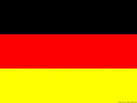
German |
German (biology) German pathologist Max Westenhöfer first puts forward an aquatic ape hypothesis. |
|
30 Nov 1941

John V. Atanasoff |
John V. Atanasoff (computer science) John V. Atanasoff with Clifford Berry successfully test the Atanasoff–Berry Computer, the first electronic digital computing device. |
|
30 Nov 1941

Alfred Gilman |
Alfred Gilman (medicine) Alfred Gilman, Louis S. Goodman and Frederick S. Philips first carry out trials of anti-cancer chemotherapy, using mechlorethamine. |
|
30 Nov 1941

Isabel Briggs Myers |
Isabel Briggs Myers (psychology) Katharine Cook Briggs and her daughter, Isabel Briggs Myers, produce the first Briggs-Myers Type Indicator. |
|
30 Nov 1941

Vernon Orlando Bailey |
death Vernon Orlando Bailey Vernon Orlando Bailey, American naturalist (born 1864) |
|
08 Jan 1942
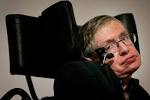
Stephen Hawking |
birth Stephen Hawking Stephen Hawking, English physicist and best-selling author of A Brief History of Time |
|
27 Feb 1942

nbsp;Solar radio |
nbsp;Solar radio In 1942, J.S. Hey discovered radio emissions from the Sun. |
|
27 Feb 1942

James Stanley Hey |
James Stanley Hey (astronomy) James Stanley Hey, a British Army research officer, first detects radio waves emitted by the sun, helping to pioneer radio astronomy. |
|
01 Mar 1942

Isaac Asimov |
Isaac Asimov (technology) Isaac Asimov's Three Laws of Robotics are introduced in his short story "Runaround" published in Astounding Science-Fiction. |
|
10 Mar 1942

William Henry Bragg |
death William Henry Bragg William Henry Bragg, English recipient of a Nobel Prize in Physics (born 1862) |
|
14 Mar 1942

Friedrich Karl Georg Fedde |
death Friedrich Karl Georg Fedde Friedrich Karl Georg Fedde, German botanist (born 1873) |
|
30 Apr 1942
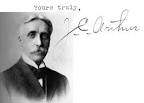
J.C. Arthur |
death J.C. Arthur Died 30 Apr 1942 at age 92 (born 11 Jan 1850). Joseph Charles Arthur was an American botanist who discovered basic facts about the parasitic fungi known as 'rusts.' He was the first head of the Department of Botany and Plant Pathology at Purdue University. The plant rusts form one of the largest natural groups of plant parasitic fungi. They are of great scientific interest because of their close evolutionary relationships with their host plants, their complex life cycles, and their numerous biological adaptations that permit them to thrive on all the continents (except Antarctica) under great extremes of environments. |
|
19 May 1942
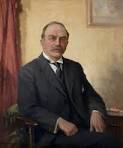
Sir Joseph Larmor |
death Sir Joseph Larmor Died 19 May 1942 at age 84 (born 11 Jul 1857). Irish physicist, the first to calculate the rate at which energy is radiated by an accelerated electron, and the first to explain the splitting of spectrum lines by a magnetic field. His theories were based on the belief that matter consists entirely of electric particles moving in the ether. His elaborate mathematical electrical theory of the late 1890s included the "electron" as a rotational strain (a sort of twist) in the ether. But Larmor's theory did not describe the electron as a part of the atom. Many physicists envisioned both material particles and electromagnetic forces as structures and strains in that hypothetical fluid. |
|
18 Jul 1942
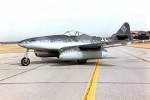
Messerschmitt Jet |
Messerschmitt Jet In 1942, Messerschmitt Me 262 Schwalbe, Germany's first operational jet fighter, takes first flight. The Me262 surprised the Allies with its speed advantage - around 100 or more miles per hour. Although it could still be intercepted by Allied piston-engine fighters, when the Nazi jet was at speed it could escape an enemy. However, introduced near the end of World War II, and with limited numbers available, the Me 262 had limited effect on the progress of the war. |
|
18 Jul 1942
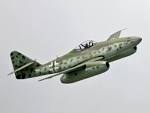
Messerschmitt Me 262 |
Messerschmitt Me 262 (technology) Messerschmitt Me 262 jet aircraft prototype makes its first flight under jet power. |
|
11 Aug 1942

George Antheil |
George Antheil (technology) Composer George Antheil and actress Hedy Lamarr are granted a United States patent for a frequency-hopping spread spectrum communication system intended to make radio-guided torpedoes harder to detect. |
|
12 Aug 1942

Sabina Spielrein |
death Sabina Spielrein Sabina Spielrein, Russian psychoanalyst, in Zmievskaya Balka massacre (born 1885) |
|
13 Aug 1942

United States |
United States (physics) United States Chief of Engineers, Major General Eugene Reybold formally establishes the 'Manhattan Engineer District' of the Corps of Engineers to undertake production facility construction work for what will become known as the Manhattan Project. |
|
22 Sep 1942

Isaak Bacharach |
death Isaak Bacharach Isaak Bacharach, German mathematician, (born 1854) |
|
03 Oct 1942

V-2 rocket |
V-2 rocket (astronomy) The first V-2 rocket is successfully launched from Test Stand VII at Peenemünde, Germany, flying a distance of 147 km and reaching a height of 84.5 km, becoming the first man-made object to reach space. |
|
05 Oct 1942

Dorothea Klumpke |
death Dorothea Klumpke Dorothea Klumpke, American astronomer (born 1861) |
|
27 Oct 1942

Alfred Baker |
death Alfred Baker Alfred Baker, Canadian mathematician (born 1848) |
|
29 Oct 1942
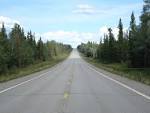
Alaska highway |
Alaska highway In 1942, the Alaska highway was opened to traffic. At mile 1202, Beaver Creek , the final connection was completed here when the 97th Engineers met the 18th Engineers. The bombing of Pearl Harbor in Dec 1941 spurred construction of the Alaska Highway. Alaska was considered vulnerable to a Japanese invasion, and the highway was deemed a military necessity. Construction began in Mar 1942, and was completed 8 months later. Literally bulldozed through the wilderness, road conditions along the Alcan were horrific; 90 degree turns and 25 percent grades were not uncommon. Rain and truck traffic turned sections of the road into an impassable mire. The highway was improved in 1943. The 1,523 mile highway officially opened to the public in 1948. |
|
03 Nov 1942

Ernest Gibbins |
death Ernest Gibbins Ernest Gibbins, English entomologist, speared by Ugandan tribesmen amongst whom he was working (born 1900). |
|
05 Nov 1942

Alexis Carrel |
death Alexis Carrel Alexis Carrel, French surgeon, biologist and winner of a Nobel Prize in Physiology or Medicine (born 1873) |
|
13 Nov 1942
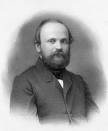
Robert Remak |
death Robert Remak Robert Remak, German mathematician, in Auschwitz (born 1888) |
|
16 Nov 1942
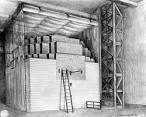
Atomic pile |
Atomic pile In 1942, work began on an experimental atomic pile to investigate the world's first artificial nuclear chain reaction. In a makeshift lab underneath the University's football stands at Stagg Field, physicists and staffers, worked around the clock to built a lattice of 57 layers of uranium metal and uranium oxide embedded in graphite blocks. A wooden structure supported the graphite pile. The research would be an important contribution to the Manhattan Project, a secret wartime project to develop nuclear weapons, which initiated the modern nuclear age. Little more than two weeks later, on 2 Dec 1942, the first self-sustained nuclear chain reaction was achieved by Enrico Fermi and his team. |
|
20 Nov 1942

Charles Schuchert |
death Charles Schuchert Died 20 Nov 1942 at age 84 (born 3 Jul 1858). American invertebrate paleontologist who was a leader in the development of paleogeography, the study of the distribution of lands and seas in the geological past. During the 1880s he made a living drawing fossil illustrations for state geological surveys, while continuing to search for specimens for his own growing collection. After serving as curator of the U.S. National Museum (1894-1904) Charles Schuchert joined the Yale University faculty following their first invertebrate paleontologist, Charles E. Beecher. |
|
26 Nov 1942
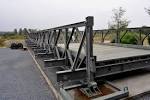
Bailey bridge |
Bailey bridge (technology) First operational military Bailey bridge erected by British Royal Engineers over the Medjerda River near Majaz al Bab in Tunisia. |
|
02 Dec 1942
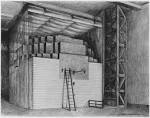
Chicago Pile-1 |
Chicago Pile-1 (physics) Chicago Pile-1, the first nuclear reactor, goes critical under the squash court of the University of Chicago, thanks to the efforts of Enrico Fermi, Leó Szilárd, George Weil and the rest of the Chicago pile team. |
|
08 Dec 1942
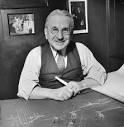
Albert Kahn |
death Albert Kahn Died 8 Dec 1942 at age 73 (born 21 Mar 1869). German-American industrial architect and planner who is considered the world's foremost in his time: “father of modern factory design.” His rise coincided with the growth of U.S. industry, particularly for the auto industry in Detroit. Shortly after founding Albert Kahn Associates in 1895, he designed Detroit's first large auto plants for the Packard Motor Car Company. Kahn's design for Packard's tenth building was the first concrete- reinforced auto factory. The building was strong, fireproof, and with large areas free of columns, an advance over the dangerous, inefficient, timber-framed plants of the era. Kahn designed Ford Motor Company's famous Highland Park plant, where Henry Ford produced of the Model T and perfected the assembly line process. |